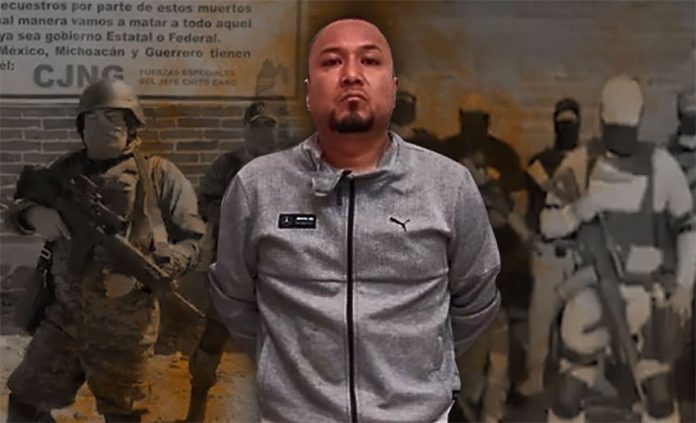Guanajuato remains Mexico’s most violent state almost two months after the capture of the leader of the Santa Rosa de Lima Cartel (CSRL), a fuel theft, drug trafficking and extortion gang engaged in a turf war in the state with the Jalisco New Generation Cartel (CJNG).
José Antonio Yépez Ortiz, better known as as “El Marro,” was taken into custody on August 2 after a long manhunt. He is currently in prison awaiting trial on a range of charges including kidnapping, fuel theft and organized crime.
Homicides declined 12.7% in August to 351 compared to 402 in July but have increased again this month.
Presenting crime data for August earlier this month, federal Security Minister Alfonso Durazo said that homicides had declined in Guanajuato since Yépez’s arrest and asserted that while the government couldn’t yet “sing victory” the situation was looking more positive in the Bajío region state.
But even with the almost 13% decline in homicides last month, Guanajuato still led the country for the crime. In the first eight months of the year, a total of 3,032 people were murdered in the state, a 33% increase compared to the same period of 2019, Mexico’s most violent year on record.
Roughly one in eight homicides in Mexico between January and August occurred in Guanajuato.
In the first 29 days of September, there were 356 homicide victims in Guanajuato, according to daily statistics published by the federal Security Ministry. Murders have spiked over the past week with about 120 victims, including 31 people who were killed on Sunday.
The government’s daily count tends to miss some homicides, which are later included in the National Public Security System’s monthly crime reports.
As a result, “it is very probable” that homicide numbers for Guanajuato in September will be about the same as July, according to security analyst Alejandro Hope.
Writing in the newspaper El Universal, Hope noted that there were a few weeks of “relative peace” after the arrest of El Marro and that August was the least deadly month in Guanajuato since last December.
But the “good streak” ended in September, he wrote. The analyst said that he doesn’t have a complete answer as to why the reduction in violence has not been maintained but provided some hypotheses.

Hope speculated that, as has occurred with other criminal groups, the “beheading” of the CSLR might have caused a dispute among gang members over who would succeed Yépez.
He also hypothesized that El Marro’s arrest caused a loss of discipline within the organization and in-fighting over control of fuel theft, drug trafficking and extortion revenue.
“At the same time, the breaking up of this group might have opened up a space for other groups (the Jalisco New Generation Cartel or maybe other local groups) to try to take over some of the illegal activities that El Marro’s people ran,” Hope wrote.
He said that another hypothesis is that the arrest of Yépez “did very little” to the organization he headed, either because El Marro wasn’t an all-powerful leader or because the CSRL has a more decentralized structure than the authorities think.
“In that scenario, the capture of Yépez would have only caused the group’s gunmen to lower their profile for a few weeks,” Hope wrote.
As soon as state and federal authorities reduced the pressure on the CSRL, its members might have returned to their criminal activities as they were carrying them out before El Marro’s arrest, the analyst hypothesized.
Hope said that a third explanation as to why the reduction in violence in Guanajuato has not been maintained is that the turf war between the CSRL and the CJNG never was its “efficient cause.”
“Maybe it was the trigger but stopped being the dominant dynamic long ago,” he wrote.
“That’s what happened in Ciudad Juárez a decade ago: the issue might have started as a conflict between cartels but a lot of scattered violence mounted on top of that – between [criminal] groups or not, involving gangs or not, in the prisons, in the streets, in homes and on public highways with the direct participation of multiple government agencies in the battle.”
In such a situation, arresting a single criminal leader does little to change the equation, Hope said, “especially if it is not accompanied by efforts at institutional reconstruction and prevention of violence.”
Whatever the explanation for the ongoing violence in Guanajuato – a report by the news website Infobae said that it has spiked recently because the new CSRL leader, a man nicknamed “El Azul,” rejected the CJNG’s attempts to strike a peace deal – “it is clear that the downfall of El Marro didn’t turn out to be the silver bullet that federal and state authorities expected,” Hope wrote.
“The drama of Guanajuato still has many chapters ahead.”
Source: Infobae (sp), Reforma (sp), El Universal (sp)
